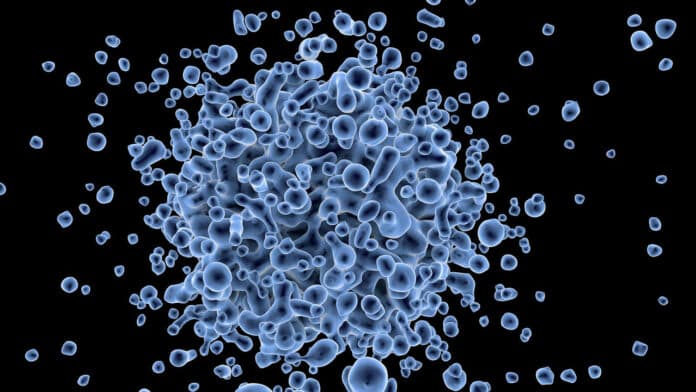Most population-based investigations that concentrate on the behavior of idealized average cells are used to contextualize our understanding of the bacterial cell cycle. Although these methods have indisputable usefulness, their mechanistic significance is constrained by the fact that they must depend on the behavior of idealized average cells because single-cell growth and physiology are stochastic.
To bridge this gap, a team of biologists and physicists from Washington University in St. Louis and Purdue University used actual single-cell data to create an updated framework for understanding the relationship between cell growth, DNA replication, and division in a bacterial system.
They sought to understand how these stochastic cells, or these “whimsical” individual bacterial cells, manage to expertly coordinate DNA replication with growth and division so that overall events take place in the correct sequence despite the “noisiness” of each process.
To answer this question, scientists carefully looked at single-cell growth data from the model organism Escherichia coli collected by the Jun laboratory at the University of California, San Diego. They then created a simple mathematical model that matched each cell’s data correctly and reflected the individual cells’ complex, unpredictable behaviors.
Others had seen the fundamental cell cycle phases of DNA replication and cell division as interdependent based on average cell behavior. Scientists, though, didn’t see it that way.
Petra Levin, the George William and Irene Koechig Freiberg Professor of Biology in Arts & Sciences at Washington University, said, “Decades of genetic and molecular studies indicate that although DNA replication and division are coordinated, they are not dependent on one another. As long as there are mechanisms to prevent division across uncopied chromosomes or fix the situation in the unlikely event that it does happen, everything is fine. E. coli does not have cell cycle checkpoints like eukaryotic cells do.”
Scientists, in the meantime, discovered that it was easy to comprehend the data from each cell. Each cell contains three (stochastic) timers, which function similarly to the merry tune from above, and whose orchestration controls the order of cell cycle events.
Based on this idea, scientists discovered they could predict the sequence of DNA replication initiation, the end of DNA replication, and division based on when the three timers independently go off and reset. His predictions matched exquisitely with the extant data on individual cell DNA replication and cell division in many different growth conditions.
By describing a stochastic, not deterministic, relationship between DNA replication and cell division, the authors have shifted how scientists understand a basic process in cell biology.
Iyer-Biswas, a physicist at Purdue University with expertise in both first-principles-based physics theory, said, “Our ultimate goal is to build a community around high-precision approaches in biology that seamlessly integrate theory and experiment. A more immediate goal is to transcend system-specific details and provide a unifying framework applicable to other bacterial species.”
Journal Reference:
- Sara Sanders, Kunaal Joshi et al. Beyond the average: An updated framework for understanding the relationship between cell growth, DNA replication, and division in a bacterial system. PLOS Genetics. DOI: 10.1371/journal.pgen.1010505
